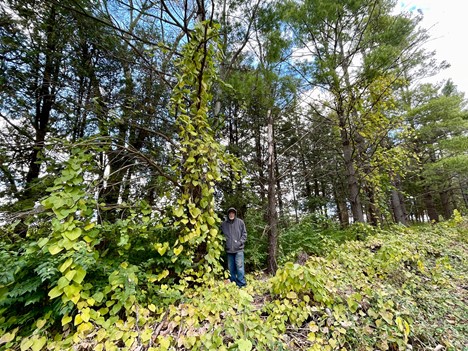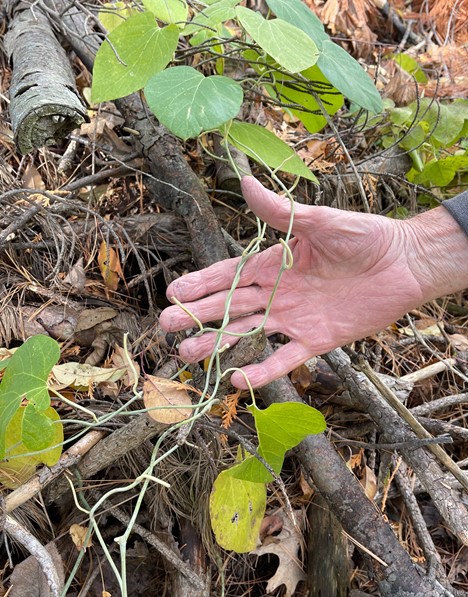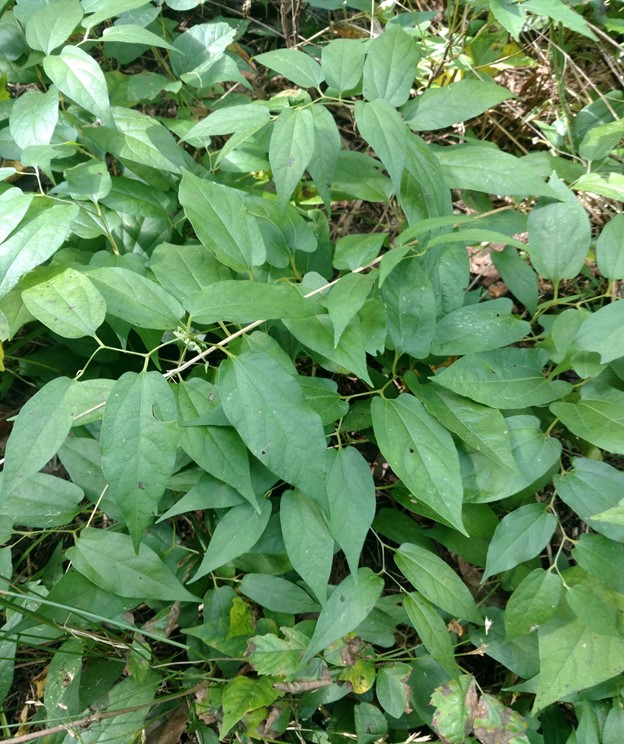Our Rare Butterfly Plantation, Part II: The Pipevine Swallowtail
The pipevine swallowtail is another quite rare butterfly in Iowa. Its caterpillars only eat the leaves of some of the species in the pipevine family, most of which are tropical or subtropical. Three of them known to grow in southeast Iowa are:
Pipevine, often labeled Dutchman’s pipe for the peculiar shape of its little green flowers which bloom behind the leaves and do not attract our attention. In the era before air conditioning, the pipevine was grown on string or trellises in front of outdoor porches to provide summer shade but let in winter sunshine after leaves drop. It was still common around the older parts of Iowa City when we moved here in 1968. Once established, it gets fairly aggressive about claiming its vertical space:

Pipevine can also be aggressive horizontally. In one area I have mulched continuously for about 10 feet between pipevine and some young arborvitae, the pipevine sent out underground runners below the mulch which then popped up below the trees and climbed them, and might have overtaken them had I not intervened. If you plant pipevine, have a plan to contain it.
A half-century ago, two very similar species of pipevine were recognized, a southern Appalachian one with large leaves, given the species name macrophylla; and a northern one with smaller leaves labeled durior. But more modern research with DNA analysis and breeding experiments show that they are the same species, the larger leaves are just a product of a longer growing season and more rainfall. And the caterpillar doesn’t care, they are both edible.

But other species of pipevine can be dire. Scott, in his book, “The Butterflies of North America,” mentions a pipevine not native to North America, with the scientific name Aristolochia elegans. Caterpillars of the pipevine swallowtail will readily eat its leaves, which then kills them. Shop carefully.

Jeff Schabilion, longtime paleobotanist for the University of Iowa, grew up in extreme southeast Iowa. He told me that in his childhood a different species of pipevine called wooly pipevine could be found in fencerows and that the leaves were eaten by the caterpillar of the pipevine swallowtail. I have not experimented with this species.
A third species of pipevine called Virginia snakeroot was assumed to have been extirpated from southeast Iowa. Unlike the previous two species, it is a small delicate understory plant that lives in rather undisturbed woodlands.
Intensive grazing usually destroys it rather quickly and there are almost no undisturbed woodlands in modern times. But in the mid 1980s several people reported seeing pipevine swallowtails in the buffer zone of the Army ammunition factory near Burlington. In 1989, Jeff Nekola used the distribution of butterfly sightings to locate a colony of these little plants.
Pipevine family and its obligates are another example of plants and animals whose core area is the forested regions to the southeast of Iowa and they extend their native range into the edge of the prairie regions where we live.




